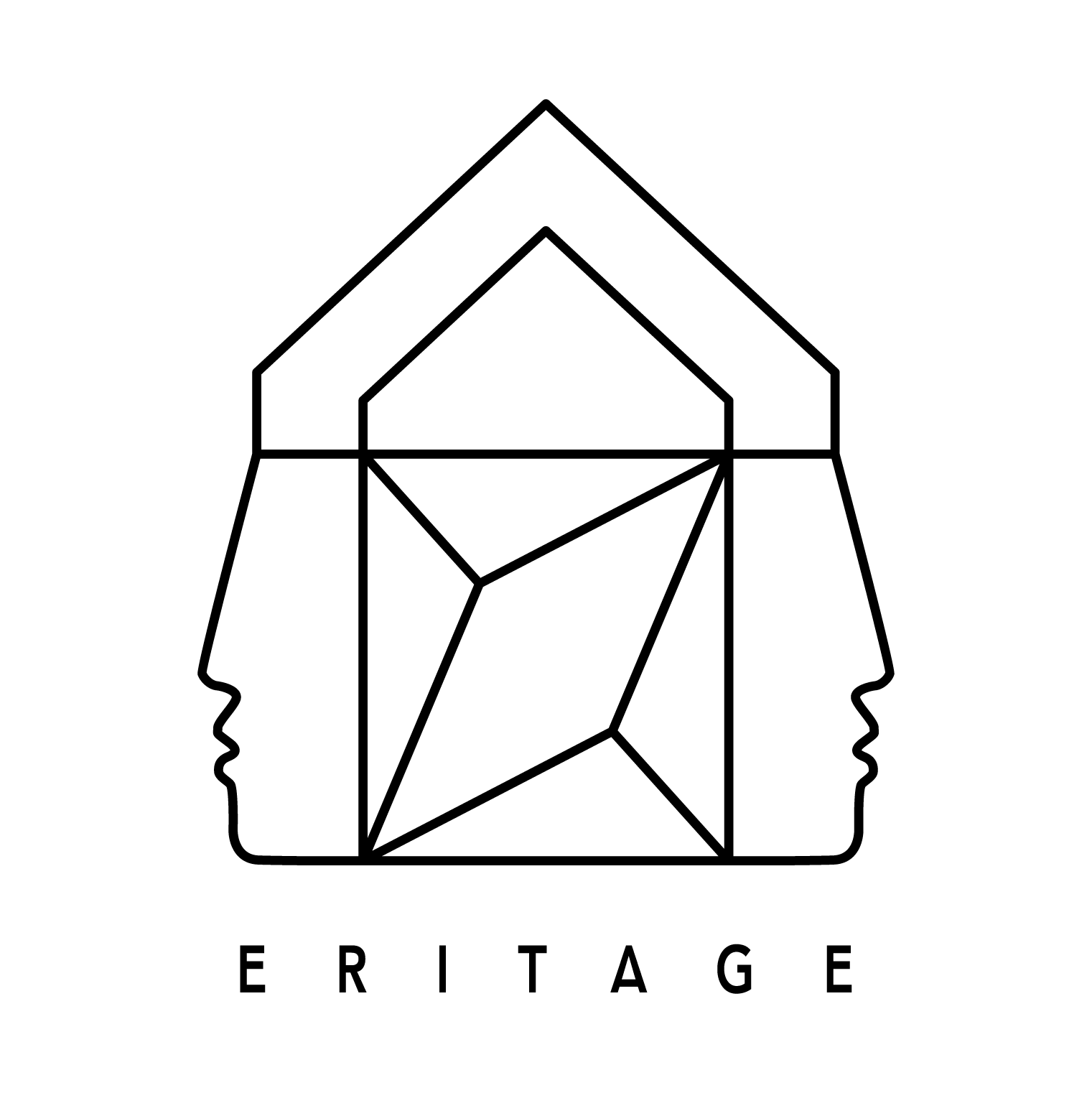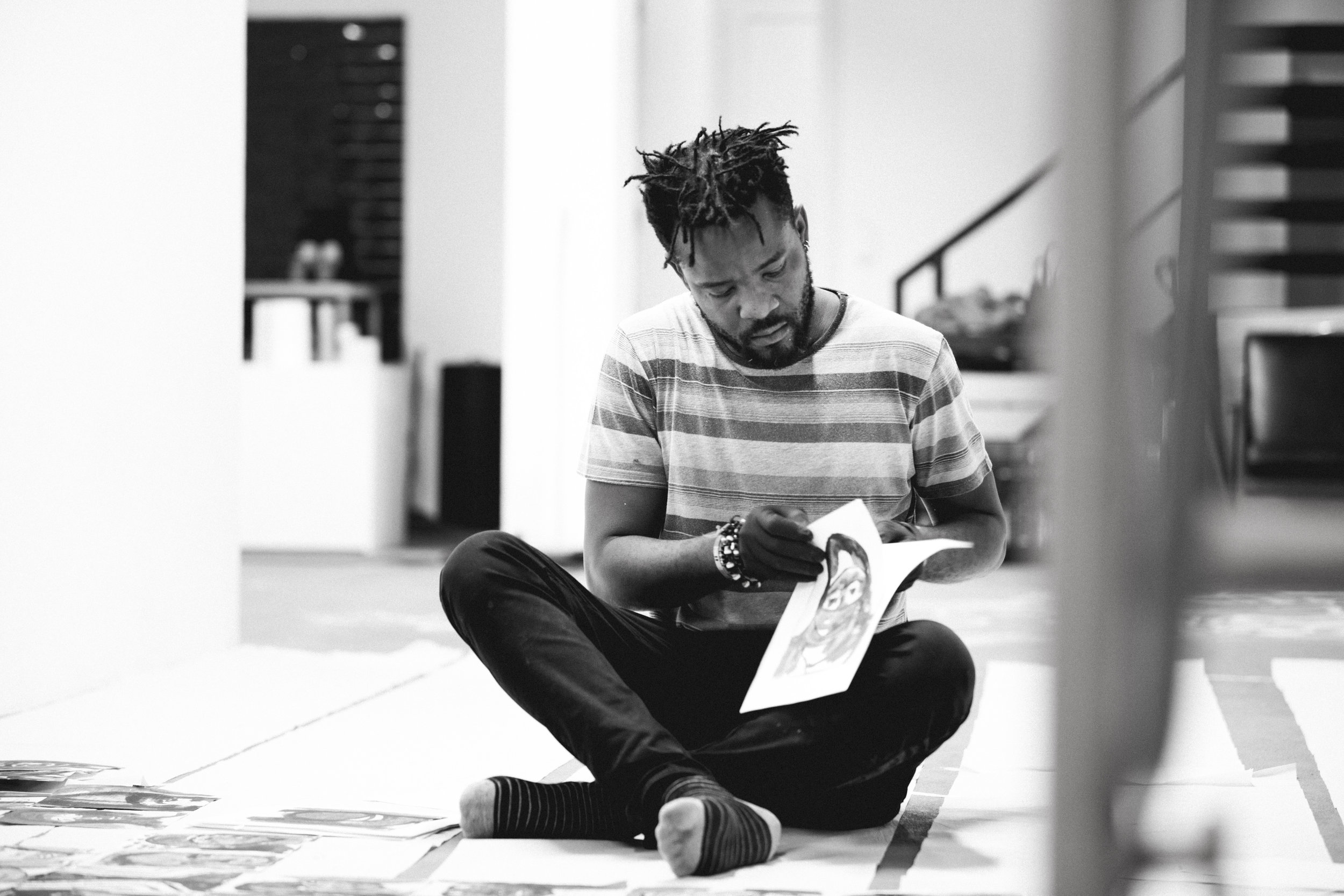FEV - ABRIL 17 | Kwame Sousa
Exhibition | Reino Angolar: Utopias e Territórios
Kwame Sousa was invited to a Three-month residence for the production of the individual exhibition "Territórios". By dividing the Wozen studio with Francisco Vidal, the concept of the exhibition was developed to house the Angolan artist as well, becoming a double exhibition in both spaces of the gallery.
São Tomé e Príncipe are two islands located in the Gulf of Guinea where latitude and longitude are close to zero degrees. The islands where discovered by the Europeans in the late fifteenth century. It remains nuclear whether the islands were inhabited at their time of Discovery. But shortly after their Discovery they were populated with people brought by force from mainland Africa, first to work as slaves in the sugar plantations and later on to be transported to the Americas.
In July 1595, a slave named Amador led a revolt against the Portuguese colonists. After some initial successes, the revolt failed and in August 1595 Amador was captured and killed. The economy of São Tomé e Príncipe had however been devastated and many colonists went to Brazil, to establish sugar plantations over there. In 1598, the Dutch started their attacks against the Portuguese that stayed on the islands, leading to to further destruction of the islands economy.
São João dos Angolares is a town on the east coast of São Tomé island. The people speak Angolar, a unique creole language. It is a nuclear how they arrived on the island. Legend has it that Amador was king of the Angolares people and that he led them to revolt. The Angolares community is still very distinct from the other communities on the islands and continues to have its own traditions and world views.
Kwame Sousa spent a couple of months in São João dos Angolares annd tried throught his art to discover the realm that was left by King Amador. It is a realm that exists in people’s minds and is shrouded in mystery, with little or no written resources, and whose existence is regularly challenged by researchers who require empirical evidence. Kwame’s process of Discovery is reflected in the exhibition.
Kwame Sousa was born in April 1980 in the Agostinho Neto plantation on São Tomé islands. He discovered his taste for art during his secondary school and started to draw as an autodidact. He became in 2001 on of the winners of the experimental Project O.I, which resulted in an exhibition of his Works in the Teia de Arte gallery in São Tomé.
In 2002 Kwame attended various workshops in the Teia de Arte gallery hosted by artists from different parts of the world. This allowed him to link and exchange experiences in different artistic languages. In the same year, he participated in the second biennale of São Tomé e Príncipe and joined an exhibition at the Polytechnic Institute in Porto (Portugal). This was followed by various solo and joint exhibitions in São Tomé and various other countries.
Kwame commenced in 2004 his academic career in Portugal, starting at EPOA, the School for Performance Arts and Craft, and followed by AR.CO, the School for Independent Art where he studied drawing and painting. In 2014 he participated in the Architecture Biennale in Venice and at the Lisbon Cinema Festival with the vídeo “Moinga House” a joint Project with the plastic artists René Tavares (also from São Tomé e Príncipe).
At this moment, he collaborates with the CACAU (House of Arts, Creation, Environment and Utopias) project in São Tomé e Príncipe, with the ZERO Point gallery in Mindelo, Cabo Verde, with the ROÇAMUNDO foundation in São Tomé e Príncipe and BUALA, portal for contemporary art.
With exhibitions in different galleries all over the world and having participated in various editions of the São Tomé e Príncipe Biennale, Kwame Sousa belongs to the third generation of artists of his country, being considered one of the most influential plastic artists of São Tomé e Príncipe.
After Kwame’s residence at Wozen, the artist was invited to be part the IIBienal de Sur. Pueblos en resistencia at the Museum of Fine Arts of Caracas, Venezuela 2018 presenting the series of works produced in our our atelier space with the theme Reino Angolar: Utopias e Territórios. This invitation was a recognition of the purpose of our program of artistic residences, a true space without borders.
Kwame Sousa foi convidado para uma residência de três meses para a produção da exposição individual Territórios. Ao dividir o atelier da Wozen com Francisco Vidal, o conceito da exposição se desenvolveu para abrigar também o artista angolano, se transformando em uma dupla exposição em ambos os espaços da galeria.
Kwame Sousa | Nascido em São Tomé e Príncipe, em 1980, Kwame é um artista verdadeiramente multidisciplinar, explorando uma enorme gama de mídias, técnicas e estilos. Integrou a II Bienal de Arte de São Tomé e Príncipe (2002), e no mesmo ano expôs no Instituto Politécnico do Porto. Iniciou sua carreira acadêmica em 2004 passou pela EPAOE e em seguida pela AR.CO - Escolha de Arte Independente. Nos anos seguintes, Kwame participou de exposições individuais e colectivas em diversos países, com seu trabalho integrando diversas coleções privadas. Recentemente, participou da Bienal de Arquitectura de Veneza (2014), do Festival de Cinema de Lisboa (2014) e expôs no Museu de Portimão (2016). Kwame pertence à terceira geração de artistas do seu país, sendo considerado um dos artistas contemporâneos mais influentes de São Tomé.
Após sua primeira residência na Wozen, o artista foi convidado a participar da IIBienal de Sur. Pueblos en resistencia no Museu de Belas Artes de Caracas, Venezuela 2018 apresentando a série de trabalhos produzidos em nosso em nosso espaço atelier com o tema Reino Angolar: Utopias de Territórios. Este convite foi um reconhecimento ao propósito de nosso programa de residências artísticas, um verdadeiro espaço sem fronteiras.



















